18+ Sample Data Processing Agreements
-
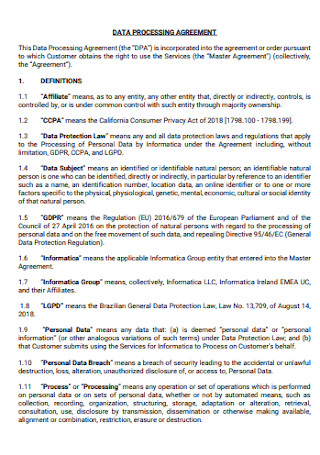
Data Processing Receipt Template
download now -
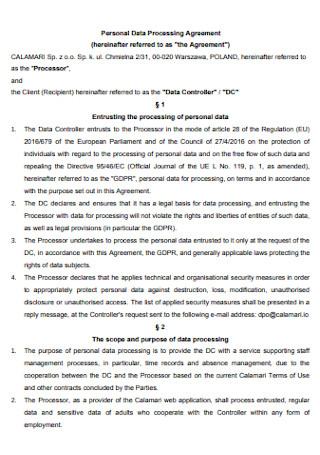
Personal Data Processing Agreement
download now -
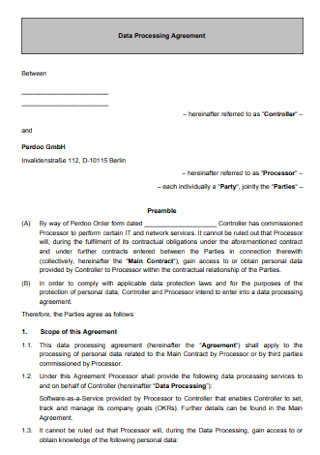
Simple Data Processing Agreement
download now -
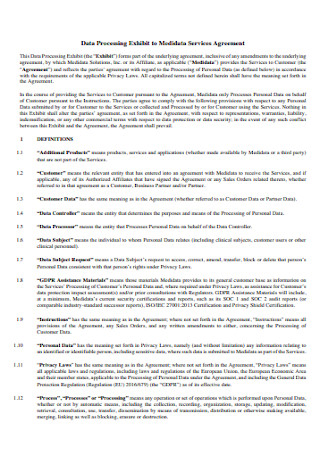
Data Processing to Medidata Services Agreement
download now -
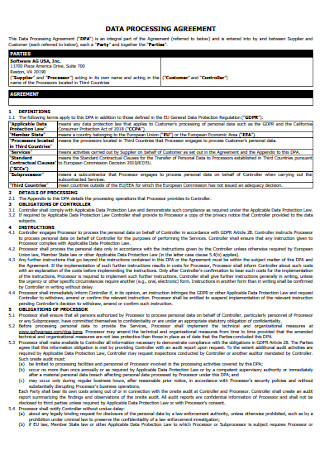
Internal Data Processing Agreement
download now -
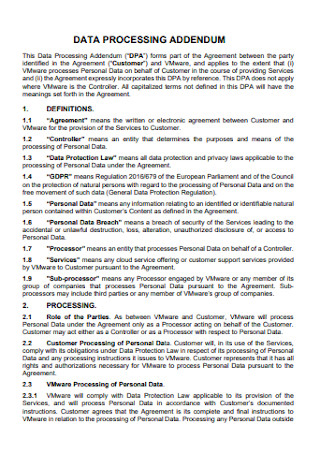
Basic Data Processing Agreement
download now -
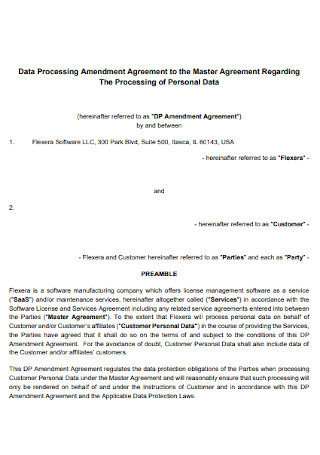
Data Processing Amendment Agreement
download now -
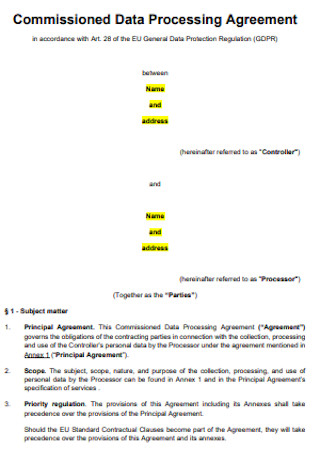
Commissioned Data Processing Agreement
download now -
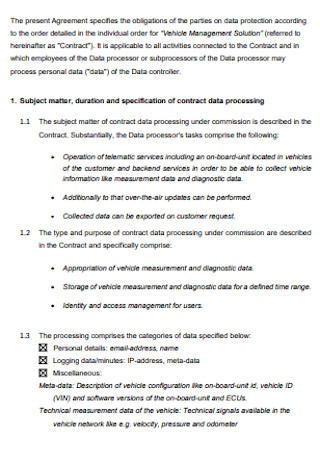
Data Processing under Commission Agreement
download now -
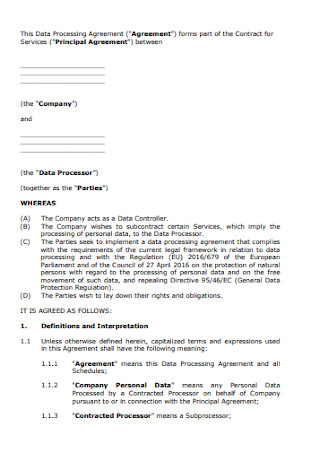
Company Data Processing Agreement
download now -
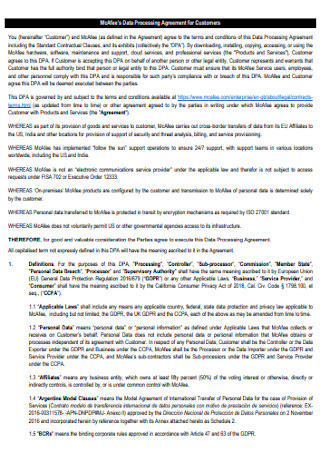
Data Processing Agreement for Customers
download now -
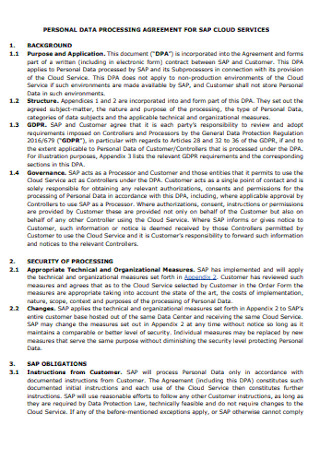
Personal Data Processing Agreement Template
download now -
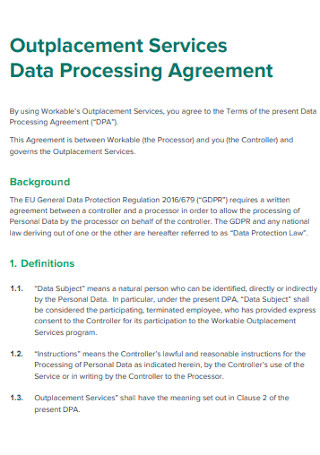
Outplacement Services Data Processing Agreement
download now -
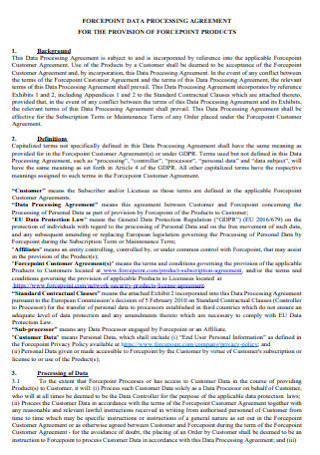
Forcepoint Data Processing Agreement
download now -
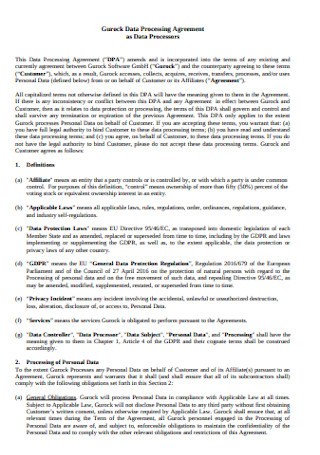
Gurock Data Processing Agreement
download now -
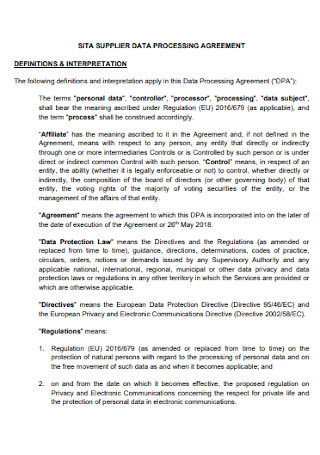
Supplier Data Processing Agreement
download now -
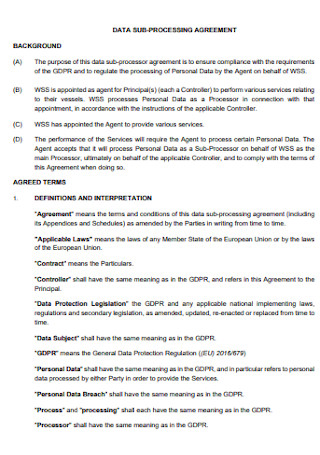
Sample Data Sub Processing Agreement
download now -
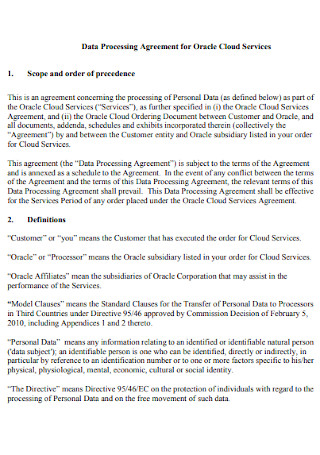
Data Processing Agreement for Services
download now -
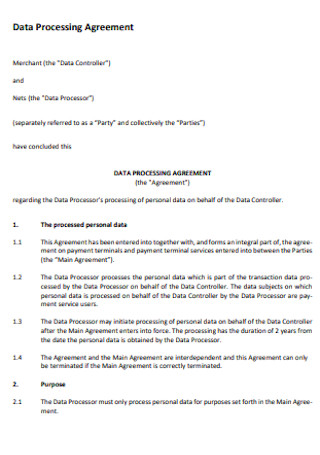
Formal Data Processing Agreement
download now
FREE Data Processing Agreement s to Download
18+ Sample Data Processing Agreements
What Is a Data Processing Agreement?
Why Is a Data Processing Agreement Needed?
Elements Of a Data Processing Agreement
Roles In a Data Processing Agreement
Types of Data Processing
Steps Or Stages Of the Data Processing Cycle
FAQs
What are the things I need to check when signing a data processing agreement?
What is the GDPR?
Who is required to have a Data Processing Agreement?
What Is a Data Processing Agreement?
First, we need to define what is data processing. It is generally referred to as the collection and manipulation of items of data to process meaningful information. The process of conversion or manipulation is carried out using a predefined sequence of operations either automatically or manually. Data processing is basically synchronizing all the data entered into the software in order to filter out the most useful information out of it. This is a very important task for any company as it helps them in extracting the most relevant content for later use.
A data processing agreement refers to a legally-binding document to be entered into between the data controller and the data processor that covers how to handle the personal data gathered from the data subjects. This agreement can be done in writing or electronic form and serves to regulate the complexities involved in data processing such as the scope and purpose as well as the relationship between the controller and the processor.
Why Is a Data Processing Agreement Needed?
A data processing agreement is required for all businesses, large and small because it is practically impossible to run a business without processing personal data and exchanging it with other businesses. It could be website analytics software or cloud storage, and whether you are the controller, processor, sub-processor, or joint controller, you must create a legally binding data processing agreement with the party with whom you exchange personal information. Given the task’s complexity, it’s best to have a data processing agreement as a separate document.
Elements Of a Data Processing Agreement
A data processing agreement that conforms to the standards set by the GDPR (General Data Protection Regulation) has the following elements in place:
Roles In a Data Processing Agreement
Here are the roles of the parties involved in a data processing agreement:
- Data Controller – The controller is responsible for establishing a lawful data process and upholding data subjects’ rights. The controller specifies how and under what conditions data is processed. The controller and its processors must have a data processing agreement.
- Data Processor – The data processor must only handle the data in the manner specified by the controller. These people have the most roles in the agreement. Data processors must have adequate information security in place, should not use sub-processors without the controller’s knowledge and consent, must cooperate with authorities in the event of an investigation, must report data breaches to the controller as soon as they become aware of them, must give the data controller the opportunity to carry out audits examining their GDPR compliance, must help the controller to comply with data subjects’ rights, must assist the data controller in managing the consequences of data breaches, must delete or return all personal data at the end of the contract, and lastly, they must inform the data controller of any infringements of processing instructions.
- Sub-Processor – The role of the sub-processor is to process data on behalf of the processor. A data processing agreement should be in place between data processors and any sub-processors they use. Without the controller’s prior approval, sub-processors are not allowed to engage in any form of data processing.
Types of Data Processing
Here are the most common types of data processing:
Steps Or Stages Of the Data Processing Cycle
As stated earlier, a data processing agreement defines clear roles and obligations for data controllers and data processors. With that being said, here are the steps or stages that a piece of information or data goes through as it is being processed:
-
1. Collection Stage
The first stage of the cycle is data collection, which is critical because the quality of the data that is being collected has a large impact on the output. The data collection process must ensure that the data gathered is both defined and accurate in order for subsequent decisions based on the findings to be valid. This stage provides both a baseline against which to measure and a target for what needs to be improved.
-
2. Preparation Stage
The manipulation of data into a form suitable for Further Analysis and processing is referred to as preparation. Raw data cannot be processed and must be validated. Data preparation is the process of creating a data set from one or more data sources for further exploration and processing. Analyzing data that has not been thoroughly screened for errors can result in highly misleading results that are heavily dependent on the quality of the data prepared.
-
3. Input Stage
Input is the task of coding or converting verified data into a machine-readable form so that it can be processed by an application. Data entry is performed using a keyboard, a scanner, or data entry from an existing source. This time-consuming process necessitates speed and precision. Because a large amount of processing power is required to break down the complex data at this stage, most data must adhere to formal and strict syntax. Because of the associated costs, many businesses are opting to outsource this stage.
-
4. Processing Stage
When data is processed, it is subjected to a variety of powerful technical manipulations using machine learning and artificial intelligence algorithms to generate an output or interpretation of the data. Depending on the type of data, the process may consist of multiple threads of execution that execute instructions at the same time. When you know where to look, you can find a variety of Data Processing Software. The use of software allows for the processing of large amounts of heterogeneous data in very short periods of time.
-
5. Output Stage
The stage of output and interpretation is where processed information is transmitted and displayed to the user. Users are presented with output in a variety of report formats, such as graphical reports, audio, video, or document viewers. The output must be interpreted in order to provide meaningful information that will guide the company’s future decisions.
-
6. Storage Stage
Data storage is the final stage of the data processing cycle, in which data and metadata (information about data) are stored for future use. The significance of this stage of the data processing cycle is that it allows for quick access and retrieval of processed information, allowing it to be passed directly to the next stage when required.
FAQs
What are the things I need to check when signing a data processing agreement?
Check whether your data processors provide adequate guarantees for the protection of the data transferred to them before signing a DPA. According to the GDPR, if there is a data breach, even if it is on the part of the processor, you, as the controller, may be held liable. As a result, it is critical to select processors who take adequate precautions to reduce the risk of a data breach. Furthermore, processors must take adequate precautions to mitigate the impact of a breach and notify you in a timely manner.
Data processors should not be able to process your data for any purpose other than the one specified in your DPA and in the outsourcing agreement. As a result, you should investigate how the processor intends to use the data you provide to it; whether it is in accordance with your contract, or whether the processor intends to use the data for its own purposes. You must also ensure that the scope of the processor’s DPA does not exceed the original legal basis for processing the personal data.
What is the GDPR?
The General Data Protection Regulation (GDPR) is a European Union (EU) law regulation on data protection and privacy in the European Union and the European Economic Area (EEA). The primary goal of the GDPR is to improve individuals’ control and rights over their personal data while also simplifying the regulatory environment for international business. If the data controller, processor, or the data subject is based in the EU, the regulation applies. Under certain conditions, the regulation also applies to organizations based outside of the EU that collect or process personal data from individuals residing within the EU. The regulation does not apply to a person processing data for purely personal or household purposes, with no connection to a professional or commercial activity.
Who is required to have a Data Processing Agreement?
When using data processors, data controllers must have a GDPR Data Processing Agreement (DPA) in place. This is due to the fact that data controllers will be sharing legally protected personal information with data processors during the course of this relationship, and a DPA will help ensure that the data processor agrees to handle the data appropriately.
In conclusion, whenever a business collects or processes personal data, an effective data processing agreement should be in place. It enables them to set out a relationship between the parties and sets the terms on how the said data should be processed. It is also a legal requirement and having one in place reduces the opportunity for any form of legal dispute to unfold. Creating a data processing agreement can prove to be a very complex process and to add to that, there is no universal approach in making this document as every business can be unique in its own respect. In this article, examples of ready-made data processing agreements are available for you to download and personally use as a reference in case you are experiencing difficulties in making one.
